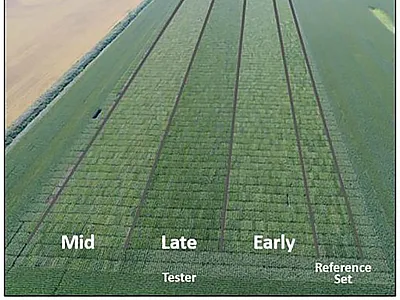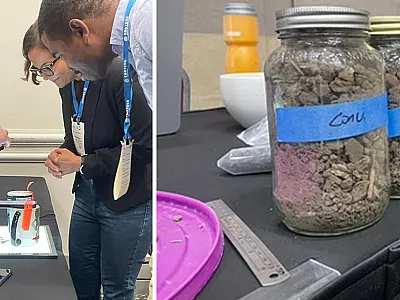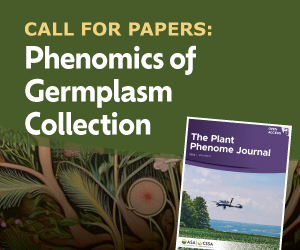The surprising potential of organic wheat
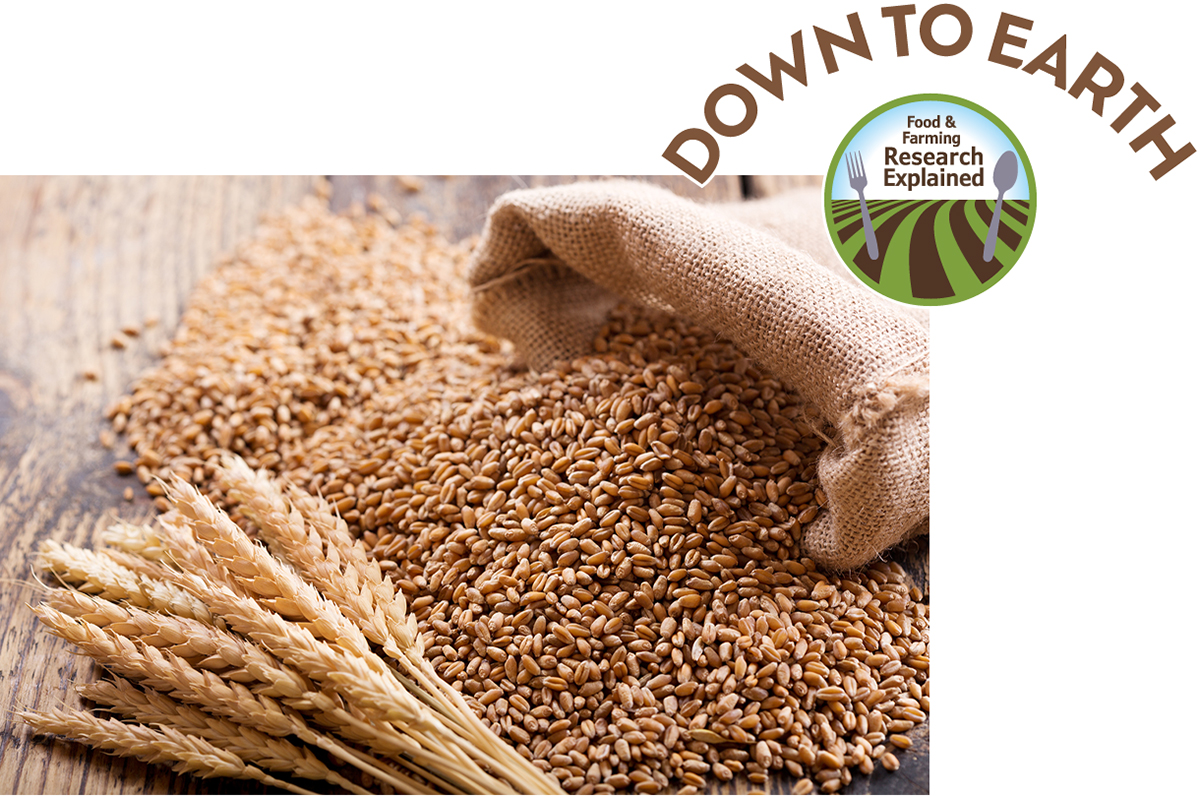
The Down to Earth series breaks down and explains recent food and farming research for readers of all backgrounds, including those without formal scientific training.
The production of wheat, an important part of our diet since 9000 B.C., has been on the decline for years now in the United States due to an increase in competition from overseas suppliers. Organic wheat, however, has been trending in the opposite direction thanks to growing interest globally.
A need exists for research to solve problems encountered by organic wheat growers. Four research teams who presented at a symposium on organic wheat production during the 2022 Annual Meeting of the American Society of Agronomy, Crop Science Society of America, and Soil Science Society of America published a series of papers about the state of the crop in Agronomy Journal. A fifth team was approached after the meeting ended and agreed to contribute a paper for the special section.
A summary of the special section sought to make a compelling case for further investment in organic wheat by outlining its profit potential and rising nationwide consumer demand. The summary also discussed growing methods and its overall economic feasibility in the hopes that more academics in agricultural science would get behind organic wheat.
A growing market
Returns for organic wheat sales are almost 80% higher than regular wheat production, and between 2023 and 2024, the United States sold 24.41 million bushels of it.
The United States is the world’s largest market for organic food and drink products and accounts for nearly 45% of global sales. Demand for organic foods and items grew from $31 billion in 2013 to $62 billion in 2022. This growth was spurred on by new methods of growing organic food, which lead more researchers to start presenting about their successes. The American Society of Agronomy recognized the growing importance of organic farming in 2009 by creating a community to help connect researchers within this field.
Wheat can be labeled organic if it is farmed without any pesticides or additives. Like conventional wheat, it’s high in fiber, boosts metabolism, strengthens your bones, and helps control blood sugar levels. It can also help you control your weight, improve cholesterol levels, and prevent heart disease, cancer, arthritis, anemia, and asthma.
The five research groups each detailed an argument for growing organic wheat.
The role of cover crops
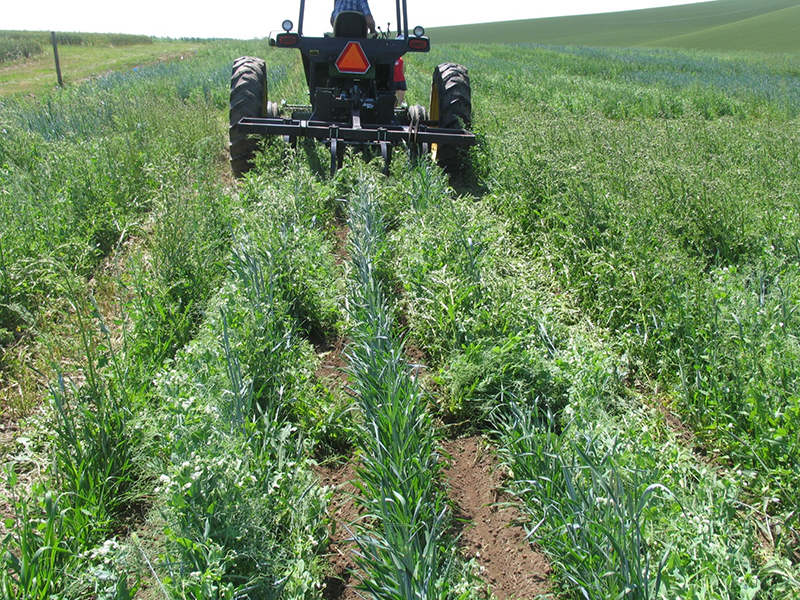
A research group at Washington State University led by Professor Ian Burke demonstrated the growing demand for organic wheat in the Pacific Northwest and West Coast. Weed management has been a huge problem for organic wheat farmers. In the Pacific Northwest, where the demand for organic food is strong and growing, perennial weeds like creeping thistle can cause massive amounts of damage.
The authors propose planting barley and alfalfa in wheat fields as a potential strategy to control the weed population while using sensor systems to properly apply herbicides approved for use in organic systems. They caution that more work will be needed to suppress weeds.
Need for storage infrastructure
A team led by Tim Seipel and Pat Carr with graduate students Chris Larson and Kara Hettinger at Montana State University studied the effectiveness of planting multiple crops with organic wheat to keep weeds from taking over farm fields. They focused on wheat and the problems caused by Canada or creeping thistle and discussed solutions for people who normally controlled the weed by intense cultivation, a process that erodes the soil and drains its water supply. Yields still went up using the reduced tillage method, and best of all, the soil and its water supply largely stayed intact.
The benefits of fertilizer
Jennifer Reeve, Earl Creech, Idowu Atoloye, and colleagues at Utah State University explained the long-lasting benefits of compost as a fertilizer for winter wheat, providing hard evidence that wheat grows taller and longer with its help, even during the winter.
Challenges and lessons learned from grain production
Field research done by Claire G. Stedden and Erin Silva and their team at the University of Wisconsin and collaborating universities found that small grains are incredibly important for the survival of small communities, but growing a wide variety of those grains gives even more benefits. It compiled two decades of research to support grain farmers in the Upper Midwest and demonstrated some methods they could use to grow their crops more efficiently and adjust to local needs.
Wheat growing across the world
Italian researcher Daniele Antichi and colleagues studied the management practices when growing durum wheat across a long period of time to understand how much the environment affects production. Their experience can provide valuable lessons that could be used on American wheat farms.
The U.S. Midwest and Northeast have been much slower to start growing organic wheat because most of their energy goes into corn and soybeans, and they also don’t have proper storage or infrastructure to grow it. Proponents of organic wheat argue that including it in rotations with corn and soybean can help control weeds, and research has also shown soil has more organic matter in fields grown with organic wheat. With more time and research, it is possible that more people across the country will come to realize the importance of organic wheat as a means of meeting demands and feeding America.
Dig deeper
View the special section, “Organic Wheat Production,” in the November–December 2024 issue of Agronomy Journal.
Text © . The authors. CC BY-NC-ND 4.0. Except where otherwise noted, images are subject to copyright. Any reuse without express permission from the copyright owner is prohibited.





